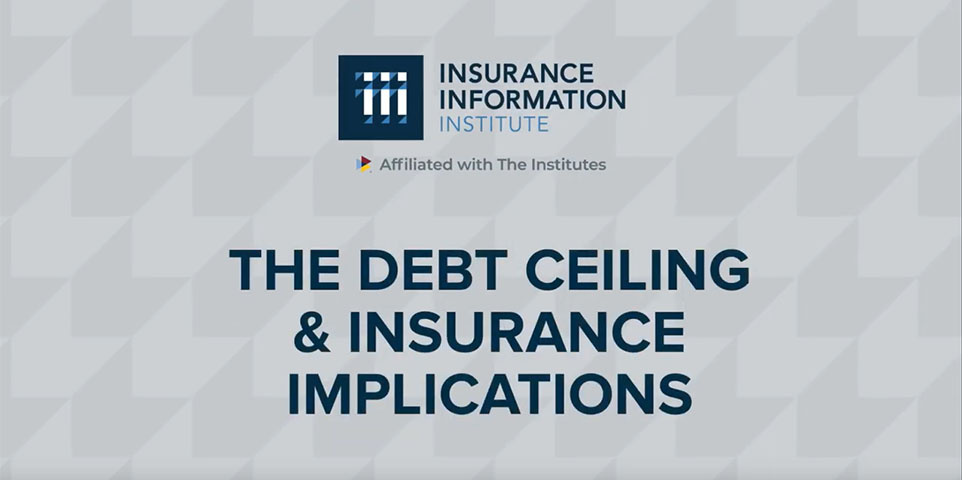MEMBERSHIP
AMPLIFY
EN ESPAÑOL
Connect With Us
- Popular search terms
- Automobile
- Home + Renters
- Claims
- Fraud
- Hurricane
- Popular Topics
- Automobile
- Home + Renters
- The Basics
- Disaster + Preparation
- Life Insurance

The negotiations over raising the federal government’s debt ceiling are doing little to ease the challenges U.S. auto, home, and business insurers are facing due to higher replacement costs (e.g., vehicle parts, construction materials) and slower growth as compared to other sectors of the U.S. economy, according to Dr. Michel Leonard, chief economist, Insurance Information Institute (Triple-I).
The main reason: the inability of The White House and Congress to reach a debt ceiling accord in a timely manner has sent a signal of governmental dysfunction to the markets, which is already absorbing the impact of higher interest rates, Leonard said.
Sean Kevelighan, CEO, Triple-I, who served in the U.S. Treasury Department during President George W. Bush’s administration, said the closest parallel to today’s debt ceiling debate occurred in 2011, not long after the recession of 2007-2009. As in 2011, today’s negotiations are occurring with the President being from a different political party than the Speaker of the House, Kevelighan noted.
Both Leonard and Kevelighan agreed the White House and the Treasury Department have ways to reduce the impact of the current debt ceiling impasse The Biden administration, for instance, can hold off on making certain payments and reduce the hours of federal employees without altogether furloughing them. Should the debt ceiling debate continue well into June 2023, more dramatic steps would need to be taken by the Biden administration, they said.